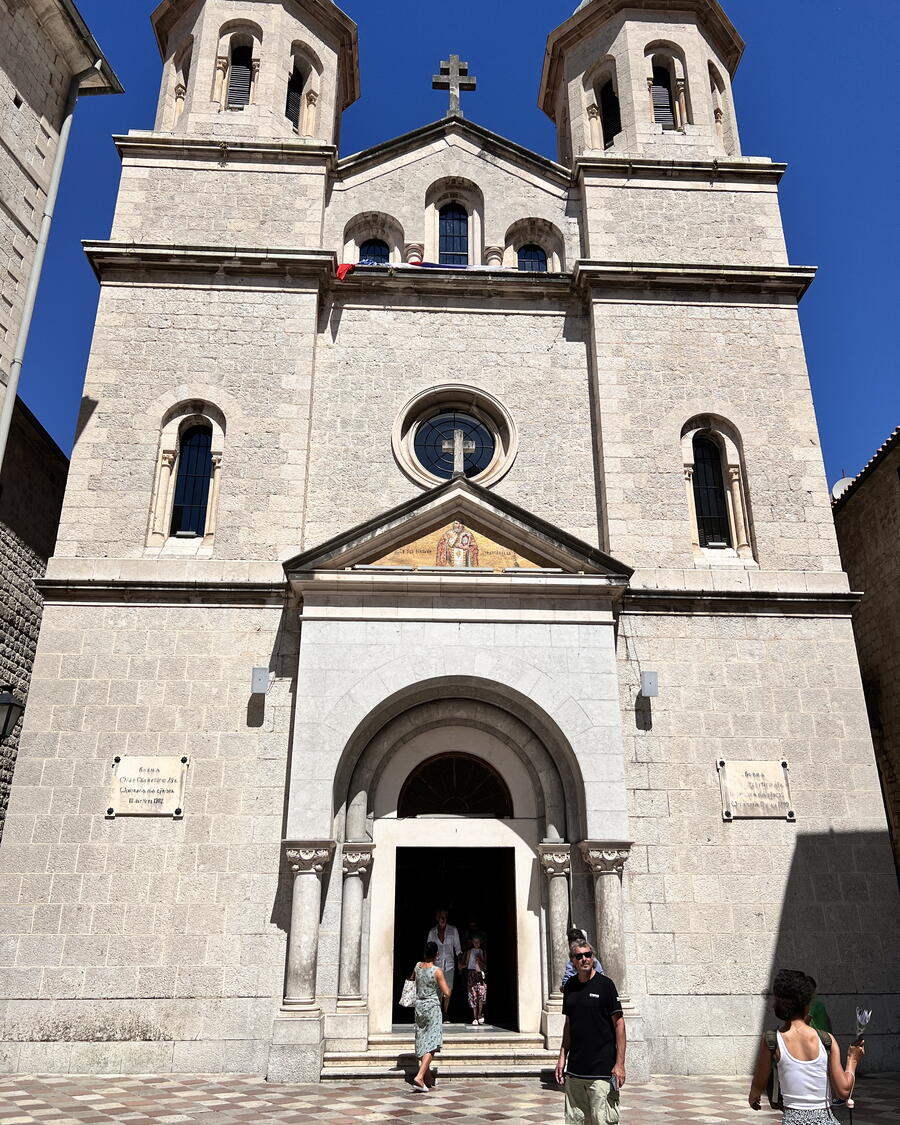After leaving Greece, our Atlas Ocean Voyages cruise returned in time to Albania and the former Yugoslavia.
During the 1980s, at the height of the Cold War with the U.S. and the Soviet Union, I remember seeing images of the communist Eastern Bloc. These were the fifteen republics under Russian rule, along with the countries of East Germany, Czechoslovakia, and Yugoslavia, ending at the border with Greece. Most of these countries seemed uniform, with tall industrial high-rises, small cars from unknown companies and bleak cityscapes.
Since 1989 and 1990, these countries don’t exist, with most breaking apart and becoming sovereign nations. Two of these include Albania, which used to be one of the most closed countries during its Soviet tenure, and Montenegro, one of the six republics in the former Yugoslavia. With Albania, I don’t think I would have gotten to see here if we were on a giant ship and might have visited the more westernized Corfu, Greece, about 20 miles away.
Sarande, the port we docked in, couldn’t be more different from Kotor, our stop in Montenegro. This resort town retained its Soviet look, with more high-rises than single-level buildings. Luckily, we traveled further inland and visited Butrint, a UNESCO World Heritage site and a remarkable archaeological site. Kotor, a more popular and modernized destination, also had its appeal.








Butrint: impressive ancient ruins
Until the early 1990s, when Albania assumed democracy and opened to the world, Butrint National Park wasn’t well known, let alone visited. However, its significance in the archaeological field earned it the UNESCO designation. Most of its ruins are from the Roman Empire era, and it spreads out over 36 square miles. That also includes its area as a wildlife preserve, protecting native species of plants and animals.
As one of the most visited places in the country, Butrint has plenty to see. Our guide, Aron, played a unique role in the park, serving as its manager and now working as its advocate. He said he wouldn't say much on the bus ride to the park. Still, he did relate fascinating details about how life is in Albania now, with rampant government corruption, inefficient infrastructure and social malaise. He said that the people don’t know how to work with democracy.
However, despite the country's difficulties, we were impressed with the park, which showed impressive structures. These included an amphitheater with moats still filled with water, a cathedral, bathhouses, a baptistry and a palatial home that likely belonged to a Roman senator who never lived there, as there were no signs of daily living. Aron told us that many structures, including this one, showcased mosaics that were now covered in dirt to preserve them.
Perhaps Butrint’s most incredible landmark is the Ali Pasha Tepelena castle, set on a hilltop and one of a half dozen with the relatively low Lion Gate entrance. The carved lion on the gate eats a bull, symbolizing the local people overcoming enemies. Within the castle complex is a museum showing relics from its history.









Kotor: a medieval showcase
I will confess: I won’t have much to say about this beautiful port set on an inlet from the Adriatic surrounded by towering mountains. That’s because I went on a 20-minute tour of a local market, just a short walk from the tender dock and outside the massive old city walls. Initially, I was going on highlights of the Montenegro tour, but I enjoyed this more, even with its abbreviated time.
The market was a fantastic experience, with the ship’s executive chef and the two guest chefs leading us through the stalls. Many sold njeguski prsut, a local dry-cured smoked ham, and cheeses. My favorite was probably the njeguski, a tangy cheese from the same area as the ham made from sheep’s milk. Along with some olives and fresh produce, the ship’s executive chef created a charcuterie with all these foods at the beginning of our dinner that night.
Most people who visit Kotor will take a tour around its old city, which was a Roman, medieval, and Venetian settlement known for its surrounding fortification, which is three miles long. Another thing that Kotor is known for is its wild cat population, and visitors can see many of them roaming the walkways and alleys, along with the dishes and cardboard shelters made for them. There is even a cat museum (which I didn’t see)
